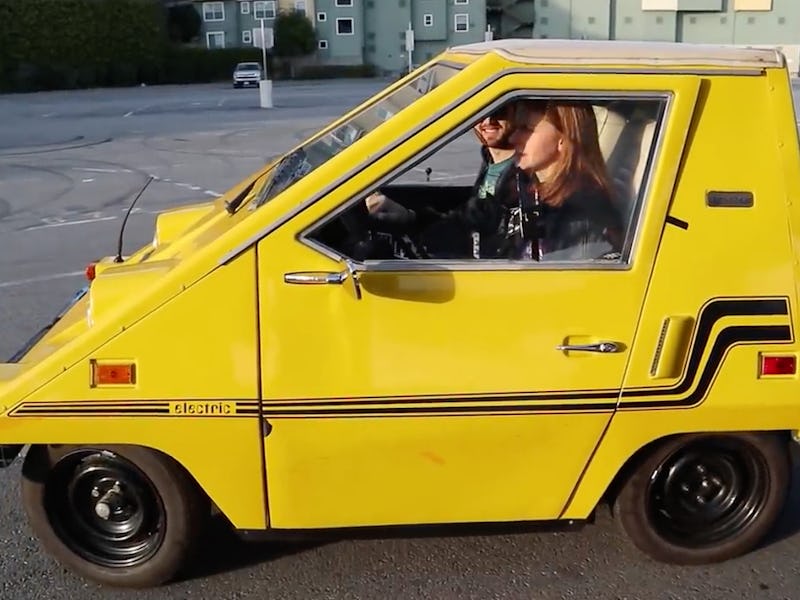Watch This Car Turn into a Computer Mouse in Bizarre DIY Project
Featuring a terrible drawing of a triangle.

Ever wanted to turn your car into the world’s largest computer mouse? YouTube tinkerer William Osman decided to do just that, helping Simone Giertz turn her yellow “Cheese Louise” electric car into a peripheral. Unfortunately, due to the way optical mice work, it was easier said than done.
“But William, that’s like gluing a pencil to your desk in your office in a skyscraper and calling it the world’s biggest pencil,” Osman said in his post-project analysis. “Kind of! But it’s not exactly THAT easy. A mouse strapped to the car will only ever detect up and down. To move the mouse sideways, you need to move the car sideways, but if your car is moving sideways you’re usually having a bad time.”
The issue stemmed from the fact that when moving a mouse, you hold the device pointing directly ahead and move in any desired direction, rather than turning and aiming the mouse before moving it. To get around this, Osman attached a mouse with a PS/2 connection (a plug that pre-dates USB) to an Arduino Pro Micro electronic platform, and then hooked up an HMC5883 magnetometer to tell the system which direction the car was facing.
The next problem was that mice only work from around one millimeter away from a desk. Osman used a bundle of M12-threaded lens mount bundles to attach one of a number of miniature lenses to the mouse, adjusting on the outside of the car to ensure the Arduino could pick up the movement. Finally, to click the mouse, Osman wired up the horn.
Watch the experiment in action below:
While the experiment is an interesting combination of common household technologies, the pair were only able to produce an awkward-looking triangle shape in a painting app. However, the use of world-sensing technologies like lidar and radar have been critical in building autonomous cars set for future roads, and motion cameras like these have found use in projects like California’s AutoX system. Osman hints that more ambitious projects could come soon.
“I’ve been wanting to experiment with an optical mouse; they’re literally the cheapest optical flow sensors you can buy,” Osman said. “My hope is to use them as ground speed/position sensors for cool projects in the future!”